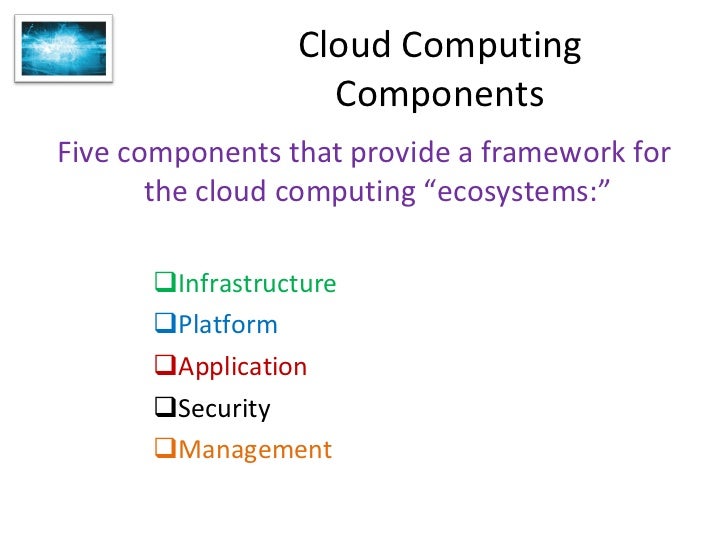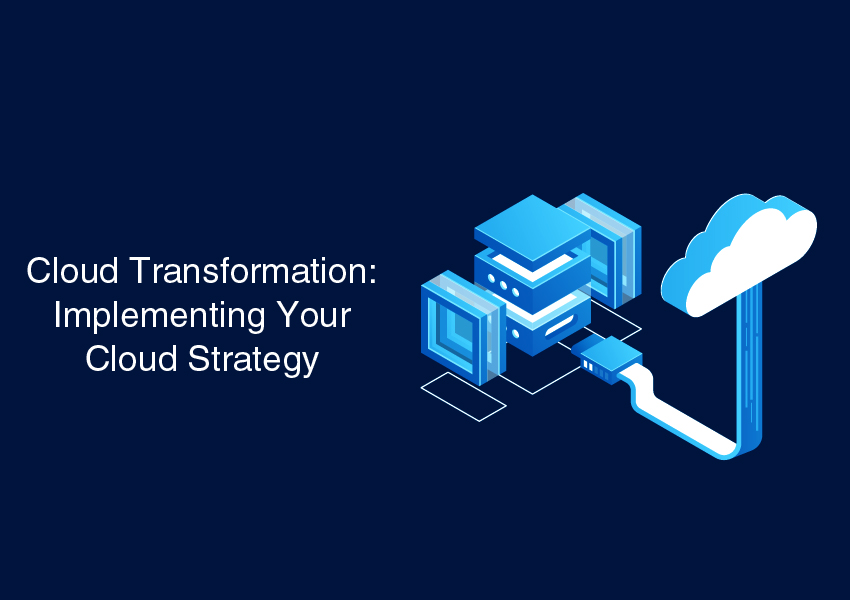The Significance of Transformation and Integration in Cloud Ecosystems
In today’s rapidly evolving digital landscape, businesses increasingly rely on cloud computing to drive innovation, streamline operations, and reduce costs. However, merely adopting cloud services is insufficient to unlock their full potential. Transformation and integration in cloud ecosystems play a critical role in maximizing the benefits of cloud computing.
Transforming and integrating cloud ecosystems involve revamping existing IT infrastructure, applications, and processes to leverage the unique advantages of cloud services best. This approach leads to streamlined operations, enhanced security, improved scalability, and increased agility.
Cloud transformation typically entails moving workloads and applications from on-premises or legacy systems to cloud-based platforms. Simultaneously, integration involves connecting various cloud services and on-premises systems, ensuring seamless data flow and interoperability.
The significance of transformation and integration in cloud ecosystems stems from several key benefits. First, by consolidating and optimizing IT resources, organizations can reduce operational complexities and minimize maintenance costs. Second, integrating cloud services with existing systems enables businesses to create a unified, cohesive IT environment, improving overall efficiency and productivity.
Moreover, transformation and integration in cloud ecosystems bolster security by centralizing access controls, implementing robust encryption, and adhering to stringent compliance standards. Additionally, integrated cloud environments facilitate data-driven decision-making by providing real-time insights and analytics, empowering organizations to respond swiftly to market changes and customer needs.
In conclusion, transformation and integration in cloud ecosystems are essential for businesses seeking to harness the full potential of cloud computing. By adopting a comprehensive strategy that encompasses workload assessment, security considerations, and vendor selection, organizations can successfully navigate the cloud transformation and integration process, unlocking numerous benefits and ensuring long-term success in an increasingly competitive digital landscape.

Key Components of a Robust Cloud Transformation and Integration Strategy
A successful cloud transformation and integration strategy requires careful planning and execution. By focusing on essential elements such as workload assessment, security considerations, and vendor selection, organizations can ensure a smooth transition to a unified, efficient, and secure cloud ecosystem.
Workload Assessment
The first step in devising a robust cloud transformation and integration plan involves assessing the existing IT infrastructure and workloads. This process entails identifying applications and services that can benefit from migration to the cloud, determining the optimal cloud deployment model (public, private, or hybrid), and estimating the total cost of ownership (TCO) and return on investment (ROI). By evaluating workloads and their dependencies, organizations can prioritize migration projects based on business value, risk, and complexity. This approach ensures that critical applications and services are migrated first, minimizing disruptions and maximizing the benefits of cloud computing.
Security Considerations
Security is a paramount concern in cloud transformation and integration initiatives. Organizations must implement robust security measures to protect sensitive data, prevent unauthorized access, and maintain regulatory compliance throughout the migration process. Best practices for securing cloud ecosystems include:
- Adopting the principle of least privilege (PoLP) to limit user access and permissions
- Implementing multi-factor authentication (MFA) for critical systems and applications
- Encrypting data at rest and in transit using industry-standard algorithms
- Regularly patching and updating cloud-based systems and applications
- Establishing a comprehensive incident response plan to address security breaches and other threats
Vendor Selection
Choosing the right cloud service provider (CSP) is crucial for a successful cloud transformation and integration strategy. Key factors to consider when selecting a CSP include:
- Service offerings and capabilities
- Pricing and billing models
- Scalability and performance
- Security and compliance features
- Support and consulting services
- Integration capabilities with existing systems and applications
By carefully evaluating CSPs based on these criteria, organizations can ensure a seamless transition to a unified, secure, and scalable cloud ecosystem that meets their unique business needs and objectives.
How to Effectively Transform and Integrate Your Cloud Ecosystem
Transforming and integrating a cloud ecosystem is a complex process that requires careful planning, execution, and ongoing management. By following a step-by-step approach and adhering to best practices, organizations can ensure a successful transition to a unified, efficient, and secure cloud environment.
Step 1: Define Your Objectives and Requirements
The first step in transforming and integrating a cloud ecosystem involves defining the objectives and requirements of the project. This process entails identifying the business needs, goals, and expected outcomes of the migration, as well as outlining the technical requirements, constraints, and limitations. By establishing clear objectives and requirements, organizations can ensure that the cloud transformation and integration project aligns with their overall business strategy and delivers the desired benefits.
Step 2: Assess Your Current IT Infrastructure and Workloads
The second step involves assessing the existing IT infrastructure and workloads to determine the optimal cloud deployment model (public, private, or hybrid) and the applications and services that can benefit from migration to the cloud. By evaluating workloads and their dependencies, organizations can prioritize migration projects based on business value, risk, and complexity. This approach ensures that critical applications and services are migrated first, minimizing disruptions and maximizing the benefits of cloud computing.
Step 3: Design and Architect the Target Cloud Environment
The third step involves designing and architecting the target cloud environment based on the objectives, requirements, and workload assessment. This process entails selecting the appropriate cloud service provider (CSP), configuring the cloud infrastructure, and integrating the cloud-based applications and services with the existing IT environment. When designing and architecting the target cloud environment, organizations should consider factors such as scalability, performance, security, and compliance to ensure a seamless and secure transition.
Step 4: Migrate and Validate the Applications and Services
The fourth step involves migrating and validating the applications and services to the target cloud environment. This process entails testing the functionality, performance, and security of the cloud-based applications and services to ensure that they meet the desired objectives and requirements. When migrating and validating the applications and services, organizations should follow best practices such as conducting a pilot migration, using automated tools and processes, and implementing a rollback plan in case of issues or failures.
Step 5: Optimize and Monitor the Cloud Environment
The final step involves optimizing and monitoring the cloud environment to ensure that it delivers the desired benefits and meets the evolving business needs. This process entails continuously monitoring the cloud infrastructure, applications, and services, and implementing performance tuning, security updates, and other optimization measures as needed.
By following these steps and adhering to best practices, organizations can ensure a successful transformation and integration of their cloud ecosystem, enabling them to reap the benefits of cloud computing and achieve their business objectives.

Top Cloud Transformation and Integration Solutions
Transforming and integrating a cloud ecosystem can be a complex and challenging process, but organizations can simplify and streamline the process by leveraging popular cloud transformation and integration solutions. These tools, platforms, and services can help organizations migrate workloads, synchronize data, and optimize cloud resources, enabling them to achieve the benefits of cloud computing and streamline their IT operations.
AWS Server Migration Service
Amazon Web Services (AWS) Server Migration Service is a free tool that enables organizations to migrate on-premises workloads to AWS quickly and efficiently. The service provides automated discovery and migration of servers, allowing organizations to schedule and track migrations, and automate the replication of server configurations and data.
Google Cloud Interconnect
Google Cloud Interconnect is a service that enables organizations to connect their on-premises networks to Google Cloud Platform (GCP) securely and reliably. The service provides dedicated and partner interconnect options, enabling organizations to extend their networks to GCP and access cloud-based applications and services with low latency and high bandwidth.
Microsoft Azure ExpressRoute
Microsoft Azure ExpressRoute is a service that enables organizations to create private, secure connections between on-premises networks and Microsoft Azure. The service provides dedicated and partner interconnect options, enabling organizations to extend their networks to Azure and access cloud-based applications and services with low latency and high bandwidth.
VMware Cloud on AWS
VMware Cloud on AWS is a service that enables organizations to run VMware workloads on AWS infrastructure seamlessly. The service provides a fully managed VMware environment on AWS, enabling organizations to migrate and run VMware workloads on AWS with consistent networking, security, and management.
Rackspace Cloud Connect
Rackspace Cloud Connect is a service that enables organizations to connect their on-premises networks to Rackspace Cloud securely and reliably. The service provides dedicated and partner interconnect options, enabling organizations to extend their networks to Rackspace Cloud and access cloud-based applications and services with low latency and high bandwidth.
IBM Cloud Hybrid Connection
IBM Cloud Hybrid Connection is a service that enables organizations to connect their on-premises networks to IBM Cloud securely and reliably. The service provides dedicated and partner interconnect options, enabling organizations to extend their networks to IBM Cloud and access cloud-based applications and services with low latency and high bandwidth.
Oracle Cloud Infrastructure FastConnect
Oracle Cloud Infrastructure FastConnect is a service that enables organizations to connect their on-premises networks to Oracle Cloud Infrastructure securely and reliably. The service provides dedicated and partner interconnect options, enabling organizations to extend their networks to Oracle Cloud Infrastructure and access cloud-based applications and services with low latency and high bandwidth.
By leveraging these cloud transformation and integration solutions, organizations can simplify and streamline the process of migrating workloads, synchronizing data, and optimizing cloud resources. These tools, platforms, and services can help organizations achieve the benefits of cloud computing, such as enhanced security, improved scalability, and streamlined operations, and enable them to focus on their core business operations.

Real-World Case Studies: Successful Cloud Transformation and Integration Projects
Transforming and integrating a cloud ecosystem can be a complex and challenging process, but many organizations have successfully navigated this journey. By examining real-world examples of successful cloud transformation and integration initiatives, we can gain insights into the strategies, tools, and techniques employed by industry leaders.
Case Study 1: Netflix
Netflix, a leading streaming service, migrated its entire platform to the cloud in 2016. By leveraging Amazon Web Services (AWS), Netflix was able to achieve enhanced scalability, reliability, and security. The company used a microservices architecture, which enabled it to deploy and manage thousands of independent services. By using automation and DevOps practices, Netflix was able to streamline its operations and reduce the time to market for new features.
Case Study 2: Capital One
Capital One, a leading financial services company, has been on a multi-year journey to transform its technology infrastructure. By adopting a cloud-first strategy, Capital One has been able to achieve greater agility, innovation, and cost savings. The company has leveraged a variety of cloud platforms, including AWS and Microsoft Azure, to build a hybrid cloud environment. By using containerization and automation, Capital One has been able to streamline its development and deployment processes, enabling it to deliver new features and services more quickly.
Case Study 3: GE Digital
GE Digital, a leading software company, has transformed its cloud ecosystem by adopting a multi-cloud strategy. By using a variety of cloud platforms, including AWS, Microsoft Azure, and Google Cloud Platform (GCP), GE Digital has been able to achieve greater flexibility, scalability, and resiliency. The company has used a variety of tools and services, including Kubernetes and Istio, to manage its cloud-native applications. By using DevOps practices and automation, GE Digital has been able to streamline its development and deployment processes, enabling it to deliver new features and services more quickly.
These case studies demonstrate the importance of transformation and integration in cloud ecosystems. By adopting a cloud-first strategy, organizations can achieve greater agility, innovation, and cost savings. By using a variety of cloud platforms, tools, and services, organizations can build a hybrid cloud environment that is flexible, scalable, and resilient. By using automation and DevOps practices, organizations can streamline their development and deployment processes, enabling them to deliver new features and services more quickly.

Navigating Cloud Transformation and Integration Challenges
Transforming and integrating a cloud ecosystem can be a complex and challenging process, with numerous obstacles that can hinder progress and derail success. However, by anticipating and addressing these challenges, organizations can ensure a smooth transition and maximize the benefits of cloud transformation and integration.
1. Data Security and Privacy
Data security and privacy are critical concerns for any organization, and cloud transformation and integration can introduce new risks and vulnerabilities. To mitigate these risks, organizations should implement robust security measures, such as encryption, access controls, and data masking. Additionally, organizations should ensure compliance with relevant data protection regulations, such as GDPR and HIPAA.
2. Integration Complexity
Integrating a cloud ecosystem can be a complex and time-consuming process, particularly when dealing with legacy systems and applications. To simplify integration, organizations should use standardized APIs and protocols, such as REST and SOAP. Additionally, organizations should consider using integration platforms, such as MuleSoft or Dell Boomi, to automate and streamline the integration process.
3. Skills and Training
Cloud transformation and integration requires new skills and expertise, particularly in areas such as cloud architecture, DevOps, and security. To address this challenge, organizations should invest in training and development programs for their staff. Additionally, organizations should consider partnering with cloud consultants and service providers to access specialized skills and expertise.
4. Cost Management
Cloud transformation and integration can be expensive, with costs ranging from infrastructure and licensing fees to training and consulting services. To manage costs, organizations should develop a comprehensive financial plan that includes budgeting, forecasting, and cost optimization strategies. Additionally, organizations should consider using cloud cost management tools, such as CloudHealth or Cloudability, to monitor and optimize cloud spending.
5. Vendor Lock-in
Cloud transformation and integration can lead to vendor lock-in, where organizations become dependent on a single cloud provider and find it difficult to switch to a different provider. To avoid vendor lock-in, organizations should adopt a multi-cloud strategy, where they use multiple cloud providers and platforms. Additionally, organizations should ensure that their cloud applications and data are portable and can be easily migrated to a different cloud provider.
By anticipating and addressing these challenges, organizations can successfully navigate cloud transformation and integration and unlock the full potential of cloud ecosystems. By using standardized APIs, integration platforms, and multi-cloud strategies, organizations can simplify integration and avoid vendor lock-in. By investing in training and development programs, organizations can build a skilled and knowledgeable workforce. By using cloud cost management tools and financial planning strategies, organizations can manage costs and optimize cloud spending. By implementing robust security measures and ensuring compliance with data protection regulations, organizations can protect data security and privacy.

Maintaining and Optimizing Your Cloud Ecosystem Post-Transformation and Integration
Transforming and integrating a cloud ecosystem is a significant undertaking, but the work does not stop once the integration is complete. To ensure long-term success, organizations must maintain and optimize their cloud ecosystems post-transformation and integration. By following best practices, organizations can maximize the benefits of their cloud ecosystems and ensure a smooth and efficient operation.
Continuous Monitoring
Continuous monitoring is critical to maintaining and optimizing a cloud ecosystem. By monitoring the cloud ecosystem, organizations can identify and address issues before they become major problems. Continuous monitoring should include monitoring for security vulnerabilities, performance issues, and availability. By using cloud monitoring tools, such as CloudWatch or Azure Monitor, organizations can automate the monitoring process and receive real-time alerts when issues arise.
Performance Tuning
Performance tuning is the process of optimizing the performance of a cloud ecosystem. By tuning the performance of the cloud ecosystem, organizations can ensure that it is running at optimal levels and meeting the needs of the business. Performance tuning should include optimizing the configuration of the cloud infrastructure, such as the number of virtual machines, storage, and network resources. Additionally, organizations should consider using load balancing and auto-scaling to ensure that the cloud ecosystem can handle peak loads and traffic.
Security Updates
Security is a critical concern for any cloud ecosystem. To maintain and optimize the security of a cloud ecosystem, organizations should ensure that all security updates and patches are applied in a timely manner. Additionally, organizations should consider using cloud security tools, such as AWS Security Hub or Azure Security Center, to monitor the security posture of the cloud ecosystem and identify potential vulnerabilities.
Continuous Improvement
Continuous improvement is the process of continually evaluating and improving the cloud ecosystem. By adopting a culture of continuous improvement, organizations can ensure that their cloud ecosystem is meeting the changing needs of the business and staying up-to-date with the latest technologies and best practices. Continuous improvement should include regular reviews of the cloud ecosystem, identifying areas for improvement, and implementing changes to address those areas.
By following these best practices, organizations can maintain and optimize their cloud ecosystems post-transformation and integration. By using continuous monitoring, performance tuning, security updates, and continuous improvement, organizations can ensure that their cloud ecosystems are running at optimal levels and meeting the needs of the business. Additionally, organizations should consider partnering with cloud consultants and service providers to access specialized skills and expertise and ensure a smooth and efficient operation.
In conclusion, transformation and integration in cloud ecosystems are critical to the success of any organization. By following best practices for maintaining and optimizing cloud ecosystems post-transformation and integration, organizations can ensure a smooth and efficient operation and maximize the benefits of their cloud ecosystems. By using continuous monitoring, performance tuning, security updates, and continuous improvement, organizations can ensure that their cloud ecosystems are meeting the changing needs of the business and staying up-to-date with the latest technologies and best practices.
The Future of Transformation and Integration in Cloud Ecosystems: Trends and Predictions
Transformation and integration in cloud ecosystems have become increasingly important as organizations seek to leverage the benefits of cloud computing. As we look to the future, there are several emerging trends and predictions that are likely to shape the cloud transformation and integration landscape. In this article, we will explore some of these trends and their potential impact on cloud ecosystems.
Artificial Intelligence (AI) and Machine Learning (ML)
AI and ML are expected to play a significant role in the future of cloud transformation and integration. These technologies can help organizations automate complex processes, improve decision-making, and enhance the user experience. By leveraging AI and ML, organizations can gain deeper insights into their cloud ecosystems and optimize their operations for maximum efficiency.
Hybrid and Multi-Cloud Environments
Hybrid and multi-cloud environments are becoming increasingly popular as organizations seek to leverage the benefits of multiple cloud providers. By integrating multiple cloud ecosystems, organizations can improve scalability, reduce costs, and enhance disaster recovery capabilities. However, managing hybrid and multi-cloud environments can be complex, and organizations must ensure that they have the necessary tools and expertise to manage these environments effectively.
Containers and Kubernetes
Containers and Kubernetes are becoming increasingly popular for cloud transformation and integration. Containers provide a lightweight and portable way to package and deploy applications, while Kubernetes provides a powerful platform for managing containers at scale. By leveraging containers and Kubernetes, organizations can improve agility, reduce costs, and enhance scalability.
Security and Compliance
Security and compliance will continue to be critical considerations for cloud transformation and integration. As organizations move more data and applications to the cloud, they must ensure that they have the necessary security measures in place to protect their assets. Additionally, organizations must comply with a growing number of regulations and standards, such as GDPR and HIPAA, which can be complex and challenging to navigate.
Serverless Architectures
Serverless architectures are becoming increasingly popular for cloud transformation and integration. Serverless architectures allow organizations to build and deploy applications without having to manage the underlying infrastructure. By leveraging serverless architectures, organizations can improve agility, reduce costs, and enhance scalability.
Conclusion
Transformation and integration in cloud ecosystems are critical for organizations seeking to leverage the benefits of cloud computing. As we look to the future, there are several emerging trends and predictions that are likely to shape the cloud transformation and integration landscape. By staying up-to-date with these trends and predictions, organizations can ensure that they are well-positioned to take advantage of the opportunities presented by cloud computing.
In conclusion, transformation and integration in cloud ecosystems are critical for organizations seeking to leverage the benefits of cloud computing. As we look to the future, there are several emerging trends and predictions that are likely to shape the cloud transformation and integration landscape. By staying up-to-date with these trends and predictions, organizations can ensure that they are well-positioned to take advantage of the opportunities presented by cloud computing. To achieve successful transformation and integration, organizations must focus on best practices, such as continuous monitoring, performance tuning, and security updates, to maintain and optimize their cloud ecosystems.
Artificial intelligence, machine learning, hybrid and multi-cloud environments, containers and Kubernetes, security and compliance, and serverless architectures are some of the key trends and predictions that are likely to shape the cloud transformation and integration landscape. By leveraging these trends and predictions, organizations can improve agility, reduce costs, enhance scalability, and gain a competitive advantage in their respective industries.
In summary, transformation and integration in cloud ecosystems are critical for organizations seeking to leverage the benefits of cloud computing. By staying up-to-date with emerging trends and predictions, organizations can ensure that they are well-positioned to take advantage of the opportunities presented by cloud computing. By focusing on best practices, such as continuous monitoring, performance tuning, and security updates, organizations can maintain and optimize their cloud ecosystems for long-term success.

